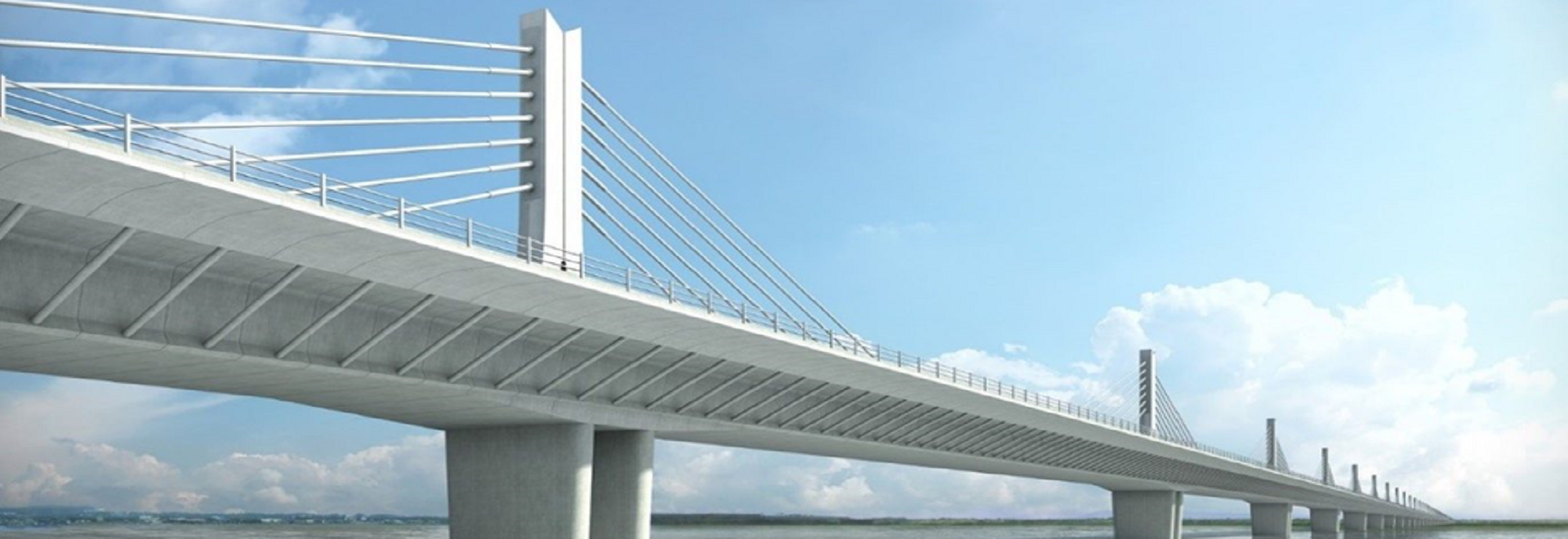Dhubri-Phulbari Bridge Project, India
Project Overview
- Employer NHIDCL (National Highway and Infrastructure Development Corporation Limited), India
- Client L&T, Ramboll India
- Tendering
Method EPC Contract - Services Tender Design
- Period 2019.11~2020.09
- Project Outline
With a total length of 18.36 km, the bridge, which connects Dhubri on the north bank(Assam) to Phulbari on the south bank (Meghalaya) of the National Highway 127B, is India's second longest over-river bridge and is being implemented by the National Highways Infrastructure Development Corporation of India (NHIDCL) under the Ministry of Road Transport and Highways and funded by the Japan International Cooperation Agency (JICA).
The bridge spanned the 12.625 kilometre long Brahmaputra River, and there was a restriction that only bridges with a span of 120 metres or more could be built within the Brahmaputra River. Therefore, the total length of the main span bridge proposed for this project was 12.625 kilometres. Once completed, the bridge will be the longest extradosed bridge in the world.
- Structural Characteristics
- At the tender stage, BANDI proposed a three-tower, four-span extradosed bridge with a main span of 125 metres, which would form one module and could be connected back-to-back to form a main navigational bridge over 12km.
- Structurally, we adopted a rigid connection structure of the main tower and girders, and planned the piers of the main tower as a twin-pier structure to minimise temperature effects and deformation caused by creep.
- As the span length of the bridge had to be more than 120 m, the expansion joints had to be installed in the centre of the girders and not on the piers. Therefore, to prevent the centre of the girders where the expansion joints are installed from being cantilevered, so-called needle beams were introduced inside the cantilevered girders at the location of the expansion joints, and the girders on both sides were connected via needle beams. This prevented excessive deflection in the centre of the bridge.
- For economic and aesthetic reasons, the bridge girders were proposed with a one-cell cross-section. Since the stay cables were installed in the centre of the girders, internal struts and prestressing tendons were introduced to resist the tensile forces caused by the cable tension.
- Regional characteristics and practices in India are very important in the selection of bridge foundations. In India, when rainfall increases during the rainy season, the amount of scour in rivers is enormous, so it is common practice to adopt well foundations for bridges crossing rivers and streams, unless there is a special case. Therefore, considering these factors, well foundations were selected for the bridge foundations.
The bridge, which connects Dhubri and Phulbari, is four-lane and has a total length of 18.36 kilometres, comprising a 12.625 kilometre navigable main bridge and the remaining approach bridge. BANDI was responsible for the tender design of the extradosed bridge.



